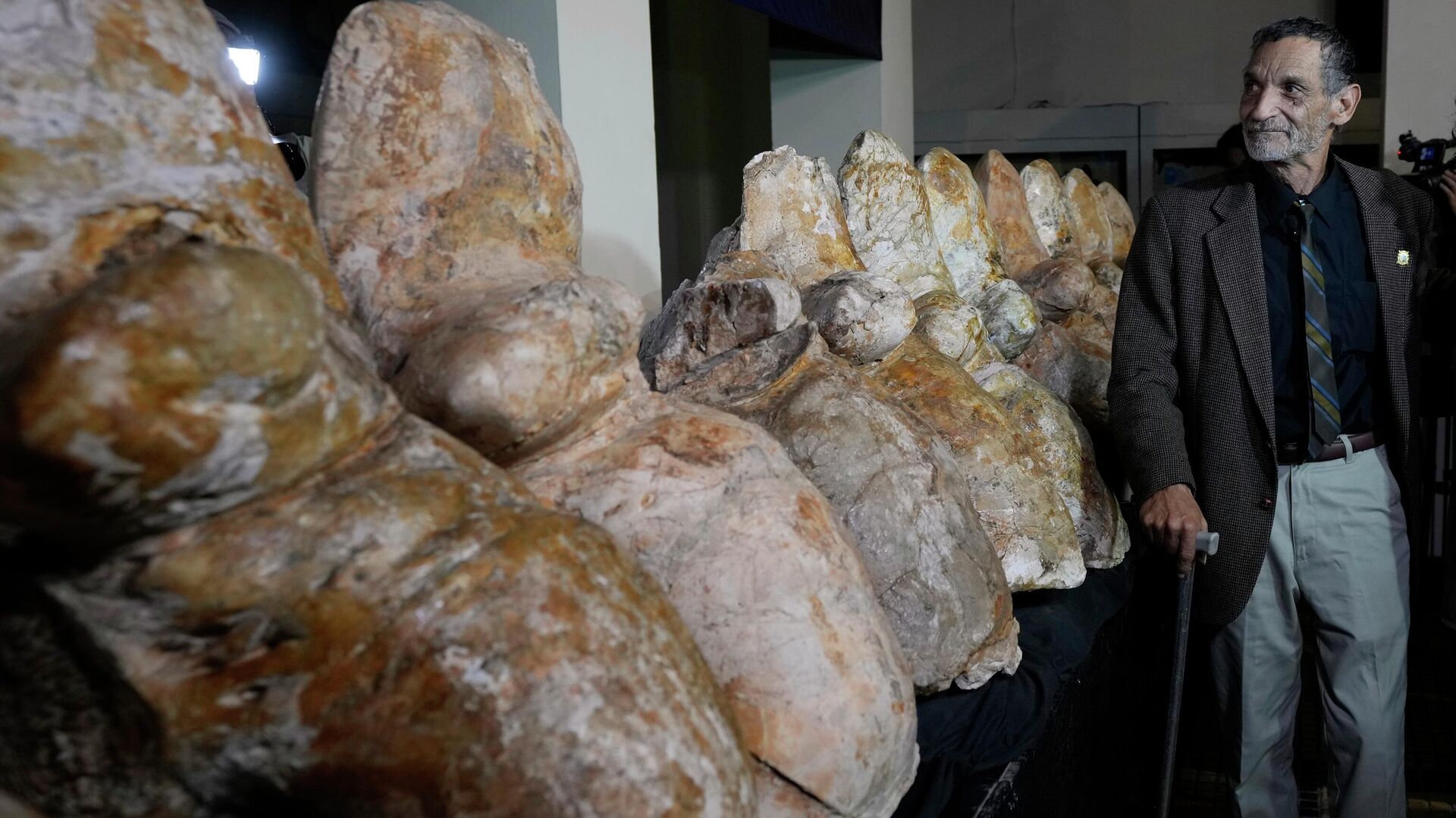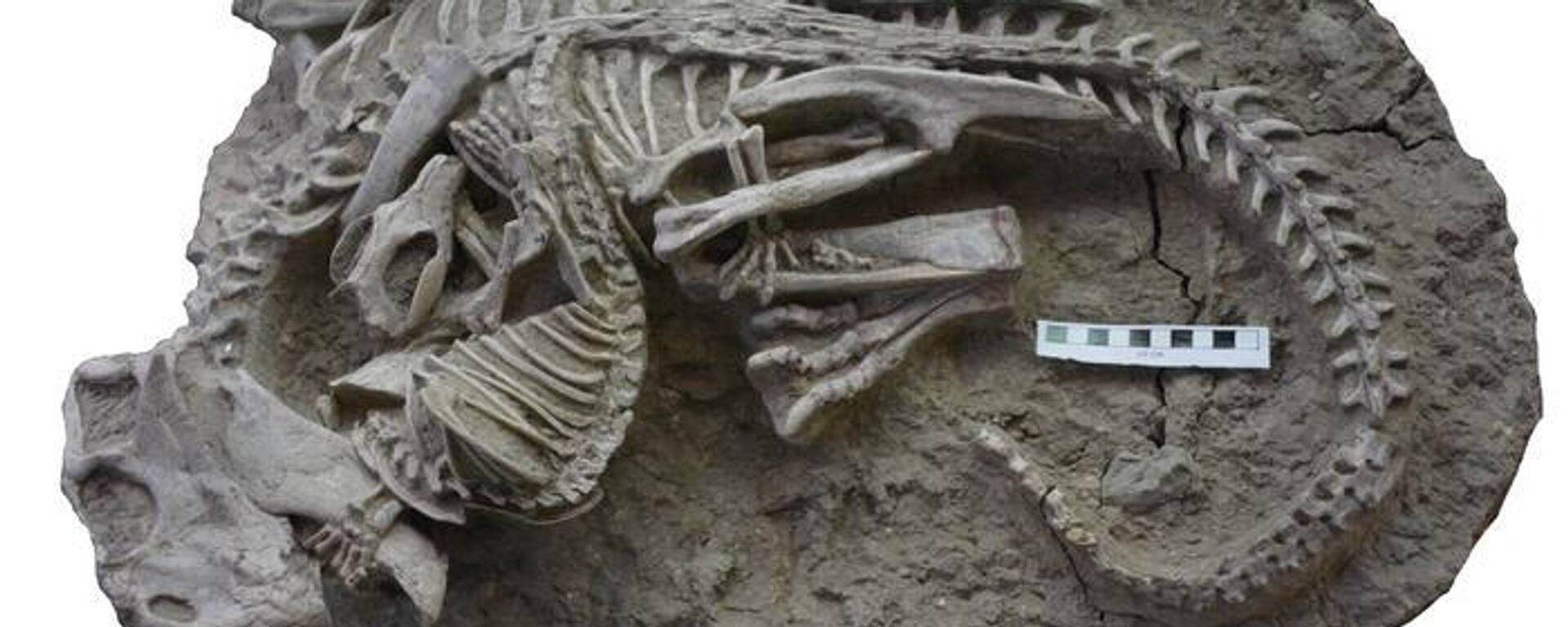https://en.sputniknews.africa/20230804/fishermans-dream-heaviest-animal-ever-potentially-discovered-in-peru-1061062333.html
Fisherman's Dream: Heaviest Animal Ever Potentially Discovered in Peru
Fisherman's Dream: Heaviest Animal Ever Potentially Discovered in Peru
Sputnik Africa
The remains of the sea behemoth found in 2010 were first presented to the public at a press conference at the Natural History Museum in the Peruvian capital... 04.08.2023, Sputnik Africa
2023-08-04T15:51+0200
2023-08-04T15:51+0200
2023-08-04T15:51+0200
nature
peru
animals
science
research
latin america
whale
https://cdn1.img.sputniknews.africa/img/07e7/08/04/1061066255_0:161:3071:1888_1920x0_80_0_0_02e71fde9159d002ee8fdf5ed8d56633.jpg
An international team of scientists has revealed a challenger for the title of the largest animal that has ever existed. Surprise, it's a whale.The Perucetus colossus, or "the colossal whale from Peru" was even larger than the reigning heavyweight champion, the blue whale, the researchers concluded in their article entitled "A heavyweight early whale pushes the boundaries of vertebrate morphology."The research was based on some massive bones found over a decade ago in the Ica desert along the southern coast of Peru by the University of San Marcos’ Natural History Museum in Lima. As the research showed, each vertebra weighs over 100 kilograms and its ribs measure nearly 1.4 meters long.Thus, the scientists estimated that the ancient whale's weight range was between 94 and 375 tons, which means that Perucetus colossus could be much heavier than the largest blue whale ever recorded with a weight of 200 tons.The researchers hypothesized that it weighed more because its bones are much denser and heavier than those of the blue whale.In addition, skeletal features indicate that Perucetus is related to Basilosaurus, another early whale that was similar in length but smaller in mass.Earlier in June in neighboring Chile, a species of herbivorous dinosaur previously unknown to exist in the Southern Hemisphere was discovered by archaeologists. It was named Gonkoken nanoi, meaning "like a wild duck or swan," from the language of the Tehuelche, an indigenous people of eastern Patagonia.
https://en.sputniknews.africa/20230719/1060623694.html
peru
latin america
Sputnik Africa
feedback@sputniknews.com
+74956456601
MIA „Rossiya Segodnya“
2023
Maxim Grishenkin
https://cdn1.img.sputniknews.africa/img/07e7/0a/17/1063018107_0:0:1104:1103_100x100_80_0_0_03090c85a11f5d2e8a19cf1d989443c9.jpg
Maxim Grishenkin
https://cdn1.img.sputniknews.africa/img/07e7/0a/17/1063018107_0:0:1104:1103_100x100_80_0_0_03090c85a11f5d2e8a19cf1d989443c9.jpg
News
en_EN
Sputnik Africa
feedback@sputniknews.com
+74956456601
MIA „Rossiya Segodnya“
Sputnik Africa
feedback@sputniknews.com
+74956456601
MIA „Rossiya Segodnya“
Maxim Grishenkin
https://cdn1.img.sputniknews.africa/img/07e7/0a/17/1063018107_0:0:1104:1103_100x100_80_0_0_03090c85a11f5d2e8a19cf1d989443c9.jpg
nature, peru, animals, science, research, latin america, whale
nature, peru, animals, science, research, latin america, whale
Fisherman's Dream: Heaviest Animal Ever Potentially Discovered in Peru
The remains of the sea behemoth found in 2010 were first presented to the public at a press conference at the Natural History Museum in the Peruvian capital Lima, where they are now on display.
An international team of scientists has revealed a challenger for the title of the largest animal that has ever existed. Surprise, it's a whale.
The Perucetus colossus, or "the colossal whale from Peru" was even larger than the reigning heavyweight champion, the blue whale, the researchers concluded in their
article entitled "A heavyweight early whale pushes the boundaries of vertebrate morphology."
The research
was based on some massive bones found over a decade ago in the Ica desert along the southern coast of Peru by the University of San Marcos’ Natural History Museum in Lima.
The excavation lasted several years and uncovered 13 vertebrae from the whale's backbone, four ribs and a hip bone.
As the research showed, each vertebra weighs over 100 kilograms and its ribs measure nearly 1.4 meters long.
Thus, the scientists estimated that the ancient whale's weight range was between 94 and 375 tons, which means that Perucetus colossus could be much heavier than the largest blue whale ever recorded with a weight of 200 tons.
The researchers hypothesized that it weighed more because its bones are much denser and heavier than those of the blue whale.
Such dense bones of the whale, which lived about 38-40 million years ago, as the scientists wrote, probably show that the sea creature may have spent its time in shallow and coastal waters.
In addition, skeletal features indicate that Perucetus is related to Basilosaurus, another early whale that was similar in length but smaller in mass.
Earlier in June in neighboring Chile, a species of herbivorous dinosaur previously unknown to exist in the Southern Hemisphere
was discovered by archaeologists.
It was named Gonkoken nanoi, meaning "like a wild duck or swan," from the language of the Tehuelche, an indigenous people of eastern Patagonia.



